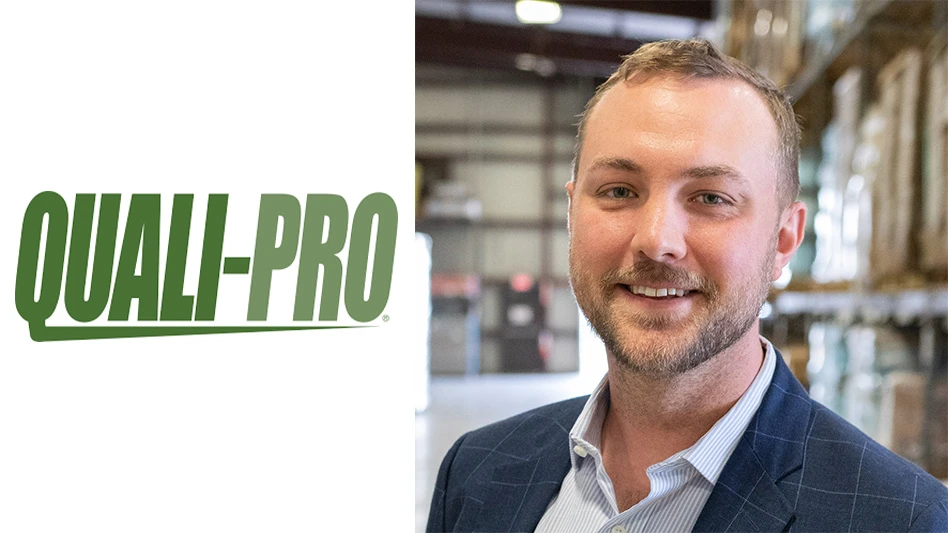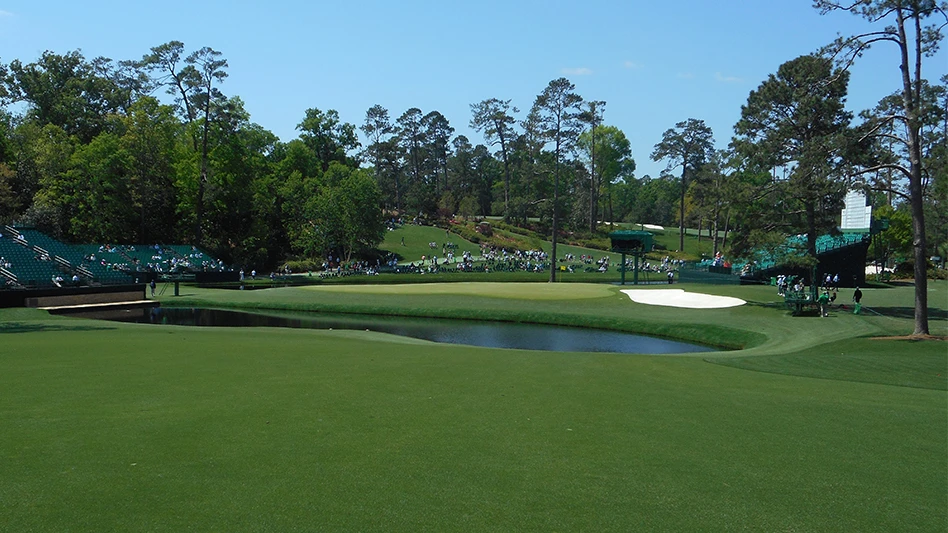When Bobby Weed Golf Design signed on to renovate and manage Palatka, Fla.’s Donald Ross-designed municipal golf course earlier this year, the firm’s goal was to address a marriage of interests.
Weed’s vision for the course included design, agronomic, infrastructure and operational improvements, as well as a sympathetic adherence to the original intent of the Donald Ross design, one of just 20 municipal layouts left in the country bearing the classic designer’s imprint.
“We have long advocated that golf course designers need to be aware of and influence the business aspects of any course’s operation, more so today than ever before,” says Bobby Weed, noting the difficult economic climate in which today’s course operators toil.
But at the same time, Weed appreciated the significance of this historic landmark – which has been in continuous operation since 1925 – which the city commissioners had entrusted to his care.
“The irreversible impact of losing such a vital, historical resource was not lost on the community,” says Weed, addressing the support he sought from the city, Putnam County, residents that golf, and residents that do not in this remodeling project. “Our responsibility is to protect and enhance this partnership as we invest in improving the golf course.”
REMODELING’S VALUE IN TOUGH TIMES
As Chicago-area architect Bob Lohmann points out on his Web site, renovation has become an enormous priority for private clubs and public facilities because golf courses are living things – they wear out – but also because the building boom that characterized the late 1990s placed enormous competitive pressures on existing courses. As a result, top-tier clubs feel the need to renovate to maintain their elite status, and more-modest operations feel the need to renovate to survive and compete.
Whether an owner decides to “restore” the course to its former state, or “renovate” using new ideas, the one unifying issue among all reconstructions is this: They address an issue or issues that clients want solved.
While historic preservation and course strategy may have been the main reason his phone rang with remodeling requests during the boom times of the late 1990s and early 2000s, in these tougher economic times club managers’ main remodeling concerns involve maintenance or playability issues.
The impetus to action, he says, is usually something like poor drainage that results in loss of play or conditions that leave the course just looking ugly. Operators are more likely to spend money during this penny-pinching era on repairing ditches, holes, or the like.
Speed of play is another reason they might want to remodel, the Illinois designer says. Courses that have too many blind shots, tricky hazards or difficult greens with poor grasses that are difficult to putt – such as Westmoor CC in Brookfield, Wis., where LGD recently oversaw the replacement of 18 Poa annua greens with A4 bentgrass – are simply too tough to play for the average golfer. The threshold for most players is about four hours. If it takes more than that they might choose not to play.
“If we could ever get the time to play 18 holes down to three hours that might do more to help the game grow than anything else we could do,” says the head of Lohmann Golf Designs.
Lohmann believes course operators are beginning to understand that the reason most people play golf is very simple – to have fun. That’s tough to do if average players are losing balls all the time because the course is too hard to play. Unfortunately, courses are often designed for the top 5 percent of players who speak up about what they want. They are the ones who want the courses Stimping at 13 with tricky runoff areas near the putting surfaces. Rather than spending time and money there, courses should focus on maintenance issues and perhaps adding a forward set of senior/junior tees that would help folks get around the course quicker.
Installing high-tech irrigation systems with multiple rows of irrigation heads that cost a million dollars or more – the rage during the course-building boom – can be course-budget killers today. “You don’t need an irrigation head everywhere there is grass,” Lohmann says. “Focus on the important areas – greens, tees and fairways – in that order.”
It is the same for intricate bunkers with flashed-up faces, often neck-and-neck with greens when it comes to ongoing maintenance costs. Such costly hazards make little sense for most public courses, Lohmann says. “They look good but most wash out in five to seven years, the sand gets contaminated and you have to rebuild them. Bunker consistency is much more important than appearance. I occasionally wake up in the middle of the night and watch some of the old Major tournament highlights on television. The bunkers they played from back then were much less fancy than those built at many courses today.”
Tees are one area that do need attention occasionally, Lohmann says. They wear out in time. They even lose elevation from continual divots taken on the par 3s. He is also a proponent of wide fairways, where golfers can easily find their balls and enjoy friendly lies.
“The goal should be good greens, tees and fairways,” he adds. If players stray from those areas, well, they basically deserve what they get. You don’t need a perfect lie in the rough.”
Private clubs slightly different
With their larger pocketbooks and different motivations, private clubs’ motivations to remodel differ from their public-facility cousins, noted Colorado architect Rick Phelps of Phelps-Atkinson Golf Design.
Phelps sees three reasons for private clubs to remodel. The first is to change the position of the club in the marketplace. The second is to maintain the course/club and keep it current with modern agronomic practices and aesthetic expectations. Third, a club may consider remodeling to reduce annual maintenance costs if existing conditions are creating extensive hand labor that could be significantly reduced by rebuilding some or all of the golf course features. The last option could include items as simple as reducing irrigated and maintained turf to something as extensive as rebuilding bunkers and tee complexes.
Changing the position of the club in the marketplace most often involves a relatively extensive remodel project, Phelps says. The overriding intent is to give the course and club an entirely new image. Often, this includes major renovation or reconstruction of a clubhouse.
The second option, maintaining the course while keeping it current with agronomic and aesthetic expectations, he continued, is most often a case of completing “deferred maintenance” all at once. For example, bunkers need to be rebuilt periodically due simply to the nature of their use. Sand is blasted out onto the play-side lips, which then get dry and lose their shape over a period of time, typically 10 to 20 years depending on frequency of play. The sand also becomes contaminated, causing it to lose its ability to drain freely. Contamination occurs from the sub-soil, the irrigation water and even from atmospheric pollutants.
Bunker reconstruction is not usually part of the typical annual maintenance budget or program, but is something that still needs to be planned and budgeted periodically to keep the golf course in “competitive” condition, Phelps says.
Other aesthetic and playability items also fall into the category of deferred maintenance such as cart path repairs/replacement, drainage improvements, tree removal/pruning/replacement and others. All of these items are not annual maintenance practices, but are essential parts of long-term upkeep. “They can be seen as maintaining the investment as much as changing it,” Phelps says.
The final option, remodeling to reduce maintenance costs, can be highly variable in terms of the extent of necessary work and potential effects. At some courses, very little work can result in significant savings of maintenance dollars. Reducing irrigated turf is a great way to save maintenance costs with very little up-front input. On the other hand, completely rebuilding bunkers to change to a more easily maintainable style can be relatively costly to implement and may take many years to pay back in cost savings.
For a facility struggling to survive in this economy, the value of added capital investment is a “golfer flight to value,” says Michael Vogt, head of the golf division at McMahon Group, a private club-consulting firm.
“Prices continue to decline for golf across most venues,” he says. “Members and daily-fee players will seek value in the courses they play. New or renovated components on golf courses will enhance value. Unfortunately, as courses go out of business due to a less-value scenario the business left in a micro-economic environment will capture the play in the community or at least in the specific geographic area. Clubs need to understand – a correction benefits the best clubs.”
With both public and private facilities looking for more ways to attract the family’s recreation dollar, golf courses are seeking to diversify their offerings via remodeling.
Lohmann says his firm is starting to see some remodels emphasizing multiple uses for a golf course: adding or repairing ponds so they can be used for fishing and skating; fairways that can host cross-country skiing; driving ranges that can be an additional revenue source; redesigning routings so players can take advantage of three-, six-, nine- or 12-hole loops as time allows.
On the home front, Weed is involved in what he terms a “repositioning” at Selva Marina Country Club in Atlantic Beach, Fla. Repurposing projects, he says, involve entitling alternative land-uses within existing golf course envelopes. The value provided by these new land uses is leveraged to fund comprehensive course upgrades. At Selva Marina, his firm planned a 30-acre, neo-traditional neighborhood adjacent to the clubhouse and obtained entitlements for 114 units. The revenue from residential sales will fund a new golf course, clubhouse, tennis facility, pools, parking and maintenance building.
What is the ROI?
What is a remodeling’s return on investment (ROI)? Is it existing member/customer retention or new member/customer attraction? “It’s really both,” Weed says. “Retained members and customers will start spending more. It is important to remain competitive and most clubs are struggling to retain players. Members are more apt to ask business-like questions about the vitality of a club today before joining.”
Both retention and attraction are important for private clubs, Vogt says. “We have found in survey after survey that members who are ‘Very Satisfied’ are much more likely to remain loyal and support club activities,” he says. “New and enhanced components that membership supports are important for the vitality of any club. Worn or non-functional assets often cost more to keep in service and diminish the pride and value in membership.
“Most club members are intuitive business people that understand investments in assets should be scheduled and accomplished to keep recurring operating expenses to a minimum and keep important assets fresh,” he adds.
The new practice range at Houston’s Champions Club – developed by former 1956 Masters and PGA Championship winner Jack Burke – is an excellent example. Architect Mike Nuzzo designed the range and some new tees a couple of years ago.
“The club has one of the largest numbers of single-digit handicap players in the country,” Nuzzo says. “Ranges were not as popular when the original one was built back in the 1960s. The new Champions range helped the club keep many of its members and hopefully attract some new ones.”
How can private and public clubs measure ROI? The best measure, Weed says, should be increases in golf-related revenue compared to the cost of capital improvement.
For public courses with the potential for healthy tee sheets, remodeling areas so golfers can get around the course quicker should translate to a larger bottom line, Lohmann says.
Most private clubs value assets the same way a business would view them and accept the cost of maintenance and upkeep, Vogt says. “However, savvy managers and superintendents assemble an asset-replacement plan and fund the plan throughout the life of the new asset,” he adds. “When the asset begins to approach its useful life a replacement is fully funded. ROI at clubs can be difficult to quantify. However, a full and active membership is always the sign of a club that’s being managed successfully.”
When selling the idea of a remodel to a board or owner, Vogt says, managers and superintendents should focus on the plan as a business decision that should be treated as such. The club’s financial package needs to make sense. The club’s architect should have demonstrated an ability to build projects that are successful both commercially and creatively.
“A project or capital expense is often a weighty decision for a board to consider especially if a membership vote is required,” Vogt says. “A full survey probing the membership is always a great first step and should be at the core. A complete study of the proposed plan should be in hand to communicate a thorough knowledge of outcomes, savings and membership benefits. If membership, board and management at a club have mutual trust in the process and ability to accomplish a large-scale project or renovation, the project is more likely to be approved with appropriate funding.
“In regards to an ownership course, the basic premise is the same, but unfortunately owners in most cases need to fund capital out of operation revenue, a difficult proposition in this economy,” he adds. “Commercial loans are difficult to acquire for golf at this time.”
Despite a down economy, if a project makes sense, all parties will know it. Weed says the best projects are not “sales jobs” at all. “You present objective facts about the course’s problems first, the design team’s track record second, and the expected benefits third. The answer falls out the bottom.” GCI
Peter Blais is a North Yarmouth, Maine-based freelance writer.
READ THE DIGITAL EDITION>>>

Explore the January 2011 Issue
Check out more from this issue and find your next story to read.
Latest from Golf Course Industry
- Smart Greens Episode 1: Welcome to the digital agronomy era
- PBI-Gordon promotes Jeff Marvin
- USGA investing $1 million into Western Pennsylvania public golf
- KemperSports taps new strategy EVP
- Audubon International marks Earth Day in growth mode
- Editor’s notebook: Do your part
- Greens with Envy 66: A Southern spring road trip
- GCSAA’s Rounds 4 Research auction begins





